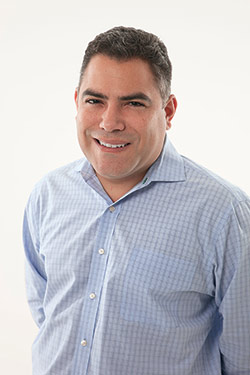 It was several years ago when I had my first experience with a friend coming out to me as transgender. I hadn’t seen her for many years, but I was happy for her transition from the young man I had known to her new self.
It was several years ago when I had my first experience with a friend coming out to me as transgender. I hadn’t seen her for many years, but I was happy for her transition from the young man I had known to her new self.
For decades I’ve tried to be a trans ally. For those who are not LGBT, that might sound silly: We’re all in the same boat, right? However, for those of us in the LGBT acronym, having one letter be an ally to another isn’t automatic. We all have biases.
Now add to that all the hurdles most of us assume trans people confront and you’ve got a recipe for hardship. Unfortunately, one of those hurdles is HIV. The virus disproportionately affects trans women, especially trans women of color. Sadly, this isn’t news to folks in the know.
One of those folks is Octavia Lewis, our cover gal. As an HIV-positive trans woman, she knows all too well the common struggles of other trans folks living with the virus. She also can relate to trans folks like her partner, Shawn Lopez, who are trying to stay free of the virus. Click here to read about their love story as a serodiscordant couple.
All women—cisgender and transgender alike—are welcome at the Positive Women’s Network United States of America (PWN-USA), a national membership group of women with HIV/AIDS. The group builds leadership skills and advocates for social justice and human rights.
Barb Cardell is currently the chair of PWN-USA. Based in Colorado, she has been HIV positive since 1991. Click here to read our Q&A with Cardell. She shares her personal journey of being diagnosed and living with HIV, her experience with stigma and her belief in self-empowerment.
Gina Brown—a PWN-USA board member and a member of the President’s Advisory Council on HIV/AIDS (PACHA)—also believes in self-empowerment. She was diagnosed with HIV in 1994. Based in Louisiana, Brown brings the voices of Southern women living with the virus to U.S. policymakers. Click here to read about her advocacy.
Regardless of gender or orientation, we all share in the hope of ending the epidemic and finding better ways to live with HIV until then. Two other stories in this issue address aspects of that hope: improving HIV testing and expanding access to medical marijuana.
Nearly half of U.S. states have legalized some form of medical marijuana. However, now that four states have legalized recreational weed, the future of prescription pot, especially for people with HIV/AIDS, looks hazy. Click here for more analysis.
As prevention efforts expand with the use of pre-exposure prophylaxis (PrEP) and the increased frequency of HIV testing required to stay on PrEP, better testing is crucial. Click here to read about the future of HIV testing on the 30th anniversary of the ELISA.
Advertisement
Advertisement
Advertisement





Comments
Comments